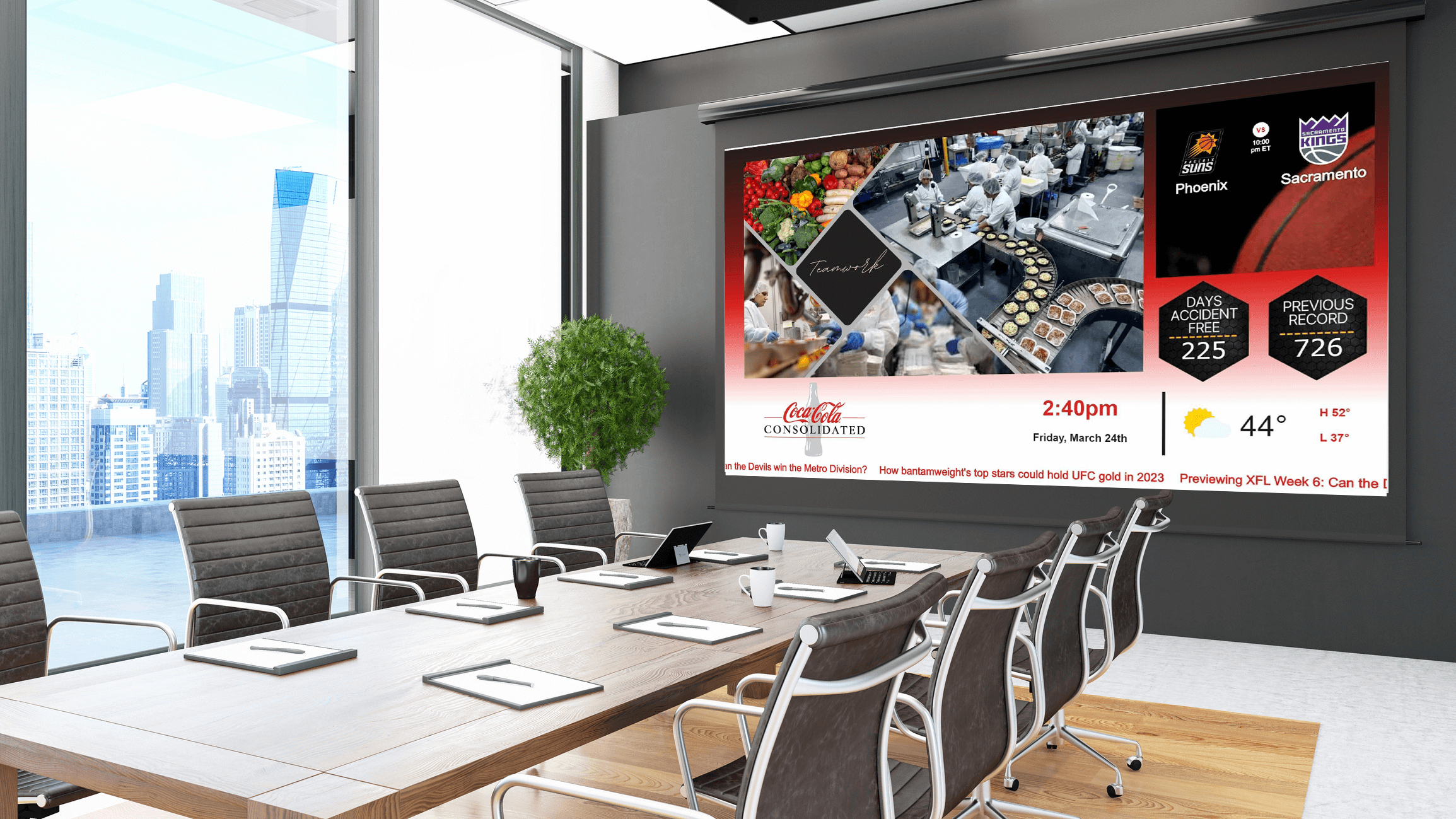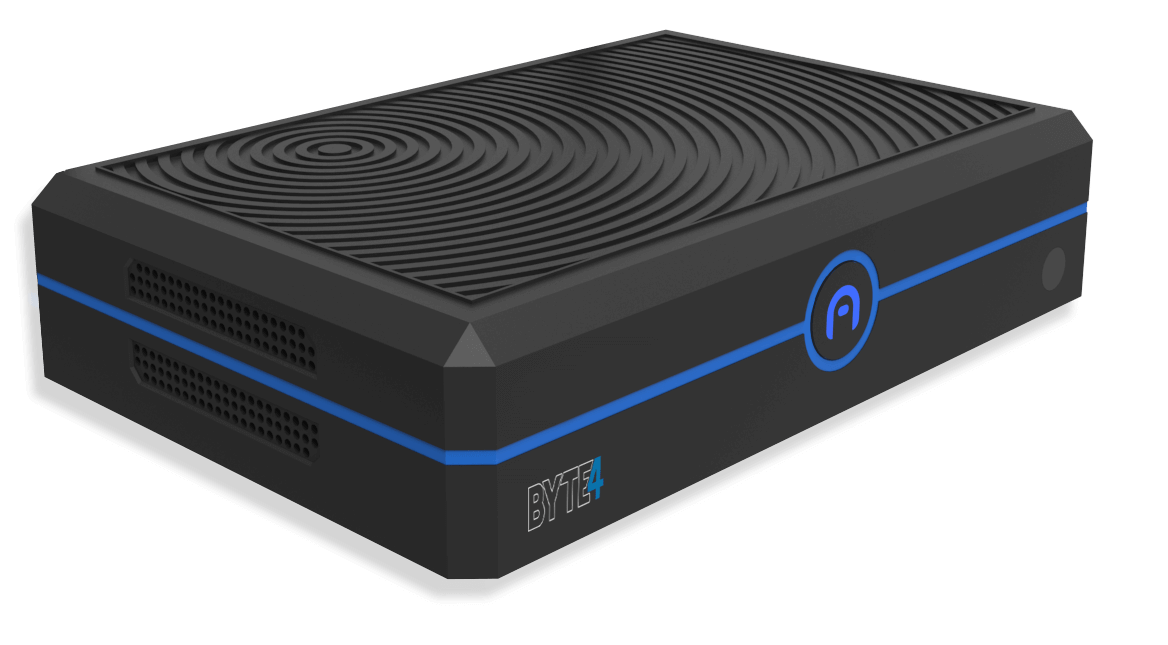Explore Types of Available Integrations
Digital displays used to broadcast multimedia content have become a powerful tool in various industries for communication, advertising, and information dissemination. As the technology behind digital signage has evolved, so too have its integration capabilities. This has led to a more connected and dynamic media experience for REACH Media Network clients. However, there is plenty to explore with our content-management system. Prebuilt integrations are immediately available through template designs that let you pull content from third-party sources. Of course, if you do not see your database or preferred integration, you can contact your assigned install coordinator to scope out your next integration project. Regardless, this comprehensive overview will explore the different aspects of digital signage integrations, examining its benefits, challenges, and various applications.
Before we begin, you must have a top-level overview of what constitutes digital signage integrations. Digital signage integration refers to a connection between digital signage systems and other technological solutions or platforms. These integrations enhance the functionality of digital design, making content more responsive, interactive, and effective in delivering content. When you implement a signage integration into your marketing strategy, you greatly expand the content potential of your displays. The primary aim is to create a cohesive system where digital signage can interact with other technologies, data sources, and user interfaces.
SEE DIGITAL SIGNAGE IN ACTION
Want to experience the power of digital signage firsthand? Request a free demo today and explore how REACH Media Network can enhance communication and engagement within your organization.
TYPES OF INTEGRATIONS
Now that you have a general understanding of what digital signage integrations are, it’s time to learn the different types of integrations you can employ.
The first thing you will become familiar with is your REACH Media Network content management system (CMS). This is the central element of digital signage that will manage the creation, scheduling, and distribution of content across all your displays. Integration within a CMS allows for real-time content updates, centralized control, and streamlined management of digital signage networks.
Once you have your CMS set up and you’ve been trained on how to use it, you’ll want to start setting up your integrations! Some of the most common types we see are data feed and API integrations. These integrations enable your system to pull live data from external sources. This can include weather updates, news headlines, social media feeds, and real-time analytics. For example, in a corporate setting, hallway signage may show important KPIs and corporate metrics to help employees adapt strategies and prioritize certain goals. In another instance, a retail store may use a display to produce a live inventory system that shows current stock levels or promotions. Such experiences improve overall customer satisfaction.
If you have the capability, interactive technologies integrate touchscreens, sensors, and other input methods to create engaging user experiences. Examples include interactive kiosks, wayfinding systems, and touchless interfaces. These technologies are often integrated with backend systems to provide dynamic content based on user interactions.
Of course, digital signage systems often need to integrate with existing networks and IT infrastructure. This includes connectivity with local area networks (LANs), wide area networks (WANs), and cloud-based services. Integration with network systems ensures that digital signage can be remotely managed and updated, and data can be securely transmitted. These technologies can be integrated directly into the service or work you provide to clients. For example, in retail environments, digital signage can be integrated with point-of-sale (POS) systems to enhance customer experiences and drive sales. Digital signage can display personalized promotions based on customer purchase history or loyalty program data, which is accessed through the POS system.
Integrations can also improve building management systems (BMS). Integration with BMS allows digital signage to interact with building infrastructure. For example, digital displays in a corporate office might be programmed to show emergency alerts or building updates based on data from the BMS. This can work in building scheduling software and event management as well. This integration will display the relevant info you push out in real-time. This includes event schedules, room bookings, and conference details. Integrations ensure content is timely and relevant to current events.

Integrations offer a vast variety of benefits to your communication content. Integrating digital signage with data feeds and real-time information ensures that content is always up-to-date and relevant. This enhances the effectiveness of communication, whether it’s displaying live traffic updates, social media trends, or current stock prices. Interactive digital signage integrations create opportunities for users to engage directly with the content. Touchscreens gesture controls, and QR Codes allow users to interact with the display, leading to more personalized and engaging experiences. These systems simplify content creation and distribution. Centralized control enables administrators to schedule and update content across multiple screens from a single platform, reducing operational complexity.
Retail: In retail environments, digital signage integrations enhance the shopping experience by displaying targeted promotions, product information, and real-time inventory updates. For example, integration with POS systems allows retailers to offer personalized discounts based on customer purchase history.
Healthcare: In healthcare settings, digital signage can be integrated with patient management systems to provide real-time updates on wait times, appointment schedules, and health information. Interactive kiosks in lobbies can guide patients through check-in processes and provide directions.
Corporate Offices: Corporate offices use digital signage integrations for communication, employee engagement, and facility management. For instance, screens in common areas can display company news, upcoming events, and emergency notifications, all managed through a centralized CMS.
Education: Educational institutions integrate digital signage to share announcements, schedules, and campus news with students and staff. Interactive displays can be used for wayfinding, helping students navigate large campuses more easily.
Transportation: Digital signage in transportation hubs, such as airports and train stations, integrates with scheduling systems to provide real-time updates on arrivals, departures, and delays. Integration with emergency alert systems ensures that critical information is promptly communicated.
CONCLUSION
Digital signage integrations offer significant benefits by enhancing content relevance, improving user engagement, and streamlining operations. However, they also present challenges such as compatibility issues, security concerns, and management complexity. As technology continues to evolve, the future of digital signage integration holds exciting possibilities, including advancements in AI, IoT, AR, and 5G connectivity. By understanding and leveraging these integrations, organizations can create more effective and engaging digital signage solutions that meet the needs of their audiences and enhance their overall communication strategies.
READY TO START YOUR DIGITAL JOURNEY?
Discover how digital signage can transform your religious community. Reach out to REACH Media Network today to learn more about our solutions, explore custom integrations, and see how we can help you connect with your congregation in meaningful ways.


